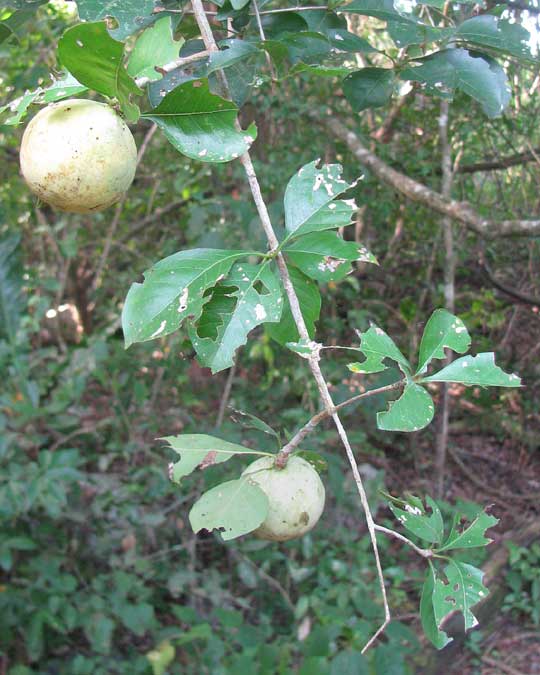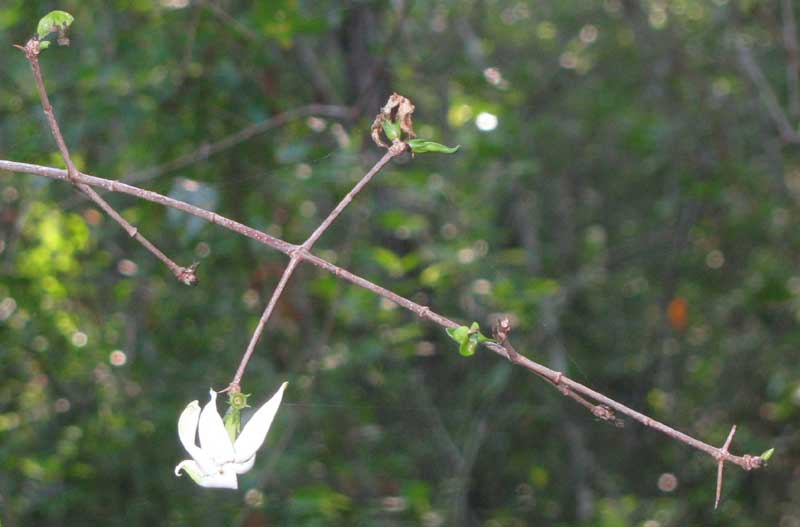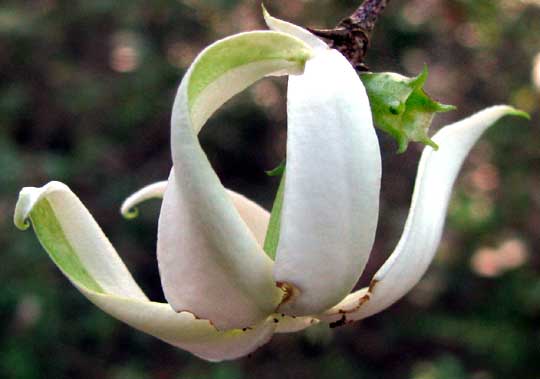Excerpts from Jim Conrad's
Naturalist Newsletter
from the January 10, 2010 Newsletter issued from Hacienda Chichen Resort beside Chichén Itzá Ruins, central Yucatán, MÉXICO; limestone bedrock, elevation ~39m (~128ft), ~N20.676°, ~W88.569°
RANDIA FRUITS
For weeks I've been waiting for the spherical, June- apple-size fruits of a certain small, spiny-twigged, semi-clambering tree to mature, and this week those fruits have begun yellowing and falling, as seen below:

In figuring out what family this plant belong I needed to notice these three features:
This combination of features informed me that I had a member of the Coffee Family, the Rubiaceae, a modest family in the North containing Buttonbushes, bedstraws and a few others, but an enormous one in the tropics.
The plant is RANDIA LONGILOBA, and I can't find a good English name for it. "K'ax," the plant is called in Maya. "Crucetilla," sometimes it's called in Spanish, which means "Little Cross," referring to limb side-branches that emerge at right angles, as observed in the above photo. Randia longiloba is fairly common in the forest here, and eye-catching because of those hard, round fruits. Does its roundness help it roll downhill to disseminate seeds? Nearly all the fallen fruits I've found had had their hard husks opened by birds and emptied before any rolling could be accomplished.
Fruit pulp I examined was puddingy and dark brown but turning black with time. It tasted like the slightly bitter "honey" from the backbone of a mature Honeylocust legume up North, combined with the taste of water that's been in a wooden cask for far too long. There was plenty of pulp in each fruit and I could see why it would be worth the efforts of a bird or rodent to gnaw and gnaw until the hard shell was opened.
The ancient Maya may have been impressed by the fruit, too, for in rituals usually closed to outsiders I've seen the fruits placed strategically on altars, and was told that their presence was important, though it wasn't explained exactly what their function was.
from the March 20, 2011 Newsletter issued from Hacienda Chichen Resort beside Chichén Itzá Ruins, central Yucatán, MÉXICO; limestone bedrock, elevation ~39m (~128ft), ~N20.676°, ~W88.569°
RANDIA FLOWERING
Nowadays Randia is flowering in the unusual way shown below:

What's peculiar is how the slender, arching stems' branches shoot off at right angles, and the flowers are attached at shoot tips. Also, the white blossoms exhibit singularly graceful lines, as shown below:
